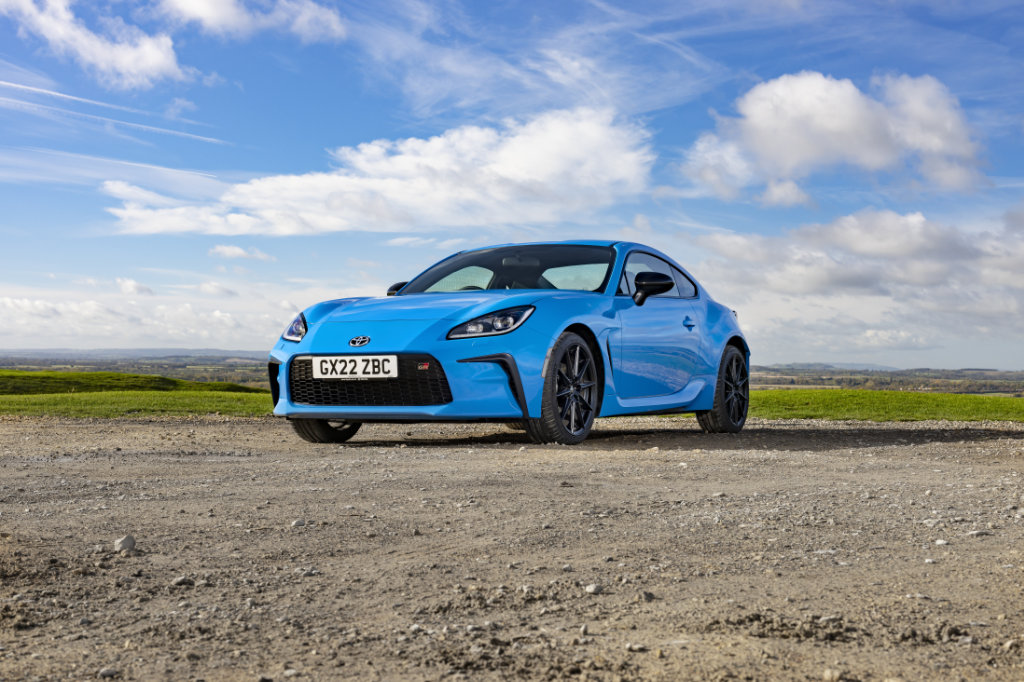
TOYOTA GR86
How times have moved on… So absolutely had the company hung its hat on the environmentally-conscientious peg of hybrid drive technology that, until the arrival of the recently retired GT86, the fastest accelerating production Toyota was… Ta…daaah; the Land Cruiser V8.
The GT86 changed all that. But only just… Because, drawing on a long heritage of front engine, rear-wheel drive sports cars that includes the beautiful 2000GT (the top of which was lopped off in You Only Live Twice merely so that Sean Connery could fit on board) and the somewhat lumpen but eagerly customised AE86, the world’s most compact four-seater sports car was actually not that quick.

The GT86 was a joint project between Subaru and Toyota. Its engine bay played host to the former’s legendary 2.0 litre boxer engine, fettled by the latter to throw 197bhp and 151lb ft of torque at the rear wheels without recourse to super- or turbocharging. The upshot was a 0-62mph dash despatched in a fairly modest 7.7 seconds, and a top speed of some 137mph. Satisfactory, rather than jaw-snapping.
Outright performance, however, wasn’t the point. The GT86 spent its gestation inhaling Weightwatchers protein drinks, and weighed in at just 1239kg. Combine a healthy power-to-weight ratio with a perfect driving position, a centre of gravity lower than a Porsche Cayman, a sweetly balanced chassis, a short throw (if somewhat nuggety) six-speed gear shift and nicely weighted, accurate steering and, even in the hands of a rank amateur, you had a recipe for fun. At £24,995, relatively affordable fun to boot.
At one level, the GT86 delivered absolutely on its promise, with beautiful composure, balance and accuracy belying the need to pour monstrous gouts of power through the rear wheels to extract entertainment. Especially since Toyota equipped the car with the same relatively skinny rubber as that with which the puritanical Prius is shod.
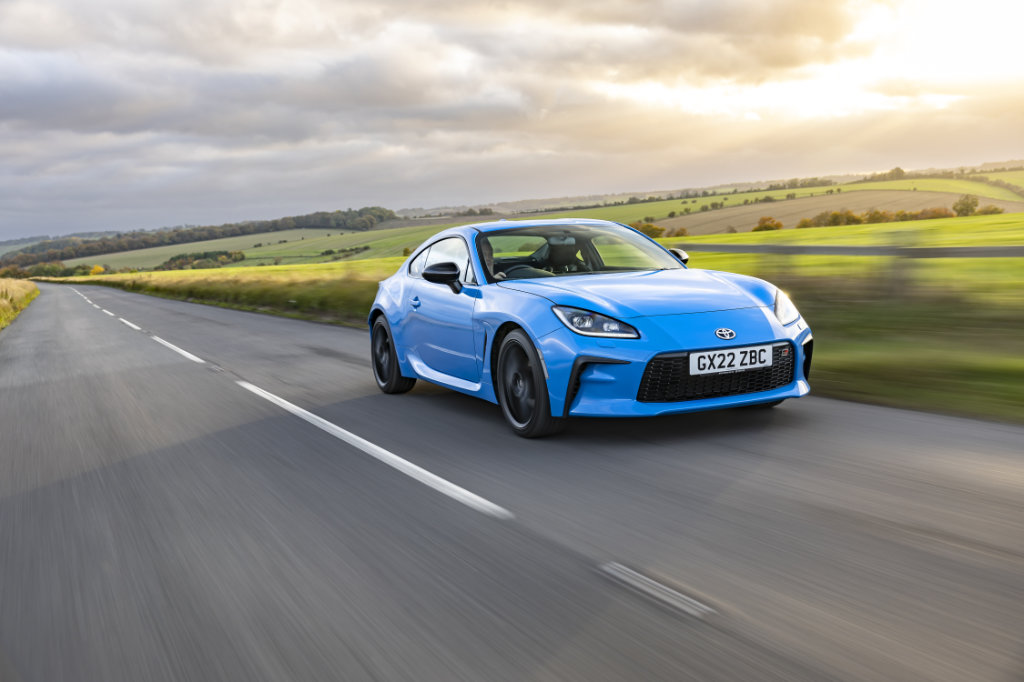
Ironically, though, it was the GT86’s very lack of power, or, to put it more precisely, low end torque, that made the car a less wholesome proposition for the target market –amateur enthusiasts who haven’t got a fortune to spend on their thrills- than intended.
And that’s because the chassis was so good you had to be going at a pretty serious lick to extract the traction control off, tail out drifting fun available. Track performance was largely irrelevant, because you had the full width of the tarmac at your disposal and knew that nothing was going to be coming the other way. But on the road, you didn’t, which restricted derring-do to corners you could see through.
Sadly, the GT86’s lack of torque meant that, in second gear corners such as the occasional hairpin, there was barely enough low down grunt to budge a surprisingly sticky back end, whilst, in third gear corners you’d be going at quite a lick, making efforts to hang the tail out a somewhat daunting prospect for the potentially ham-fisted amateur at whom this car was so squarely aimed.
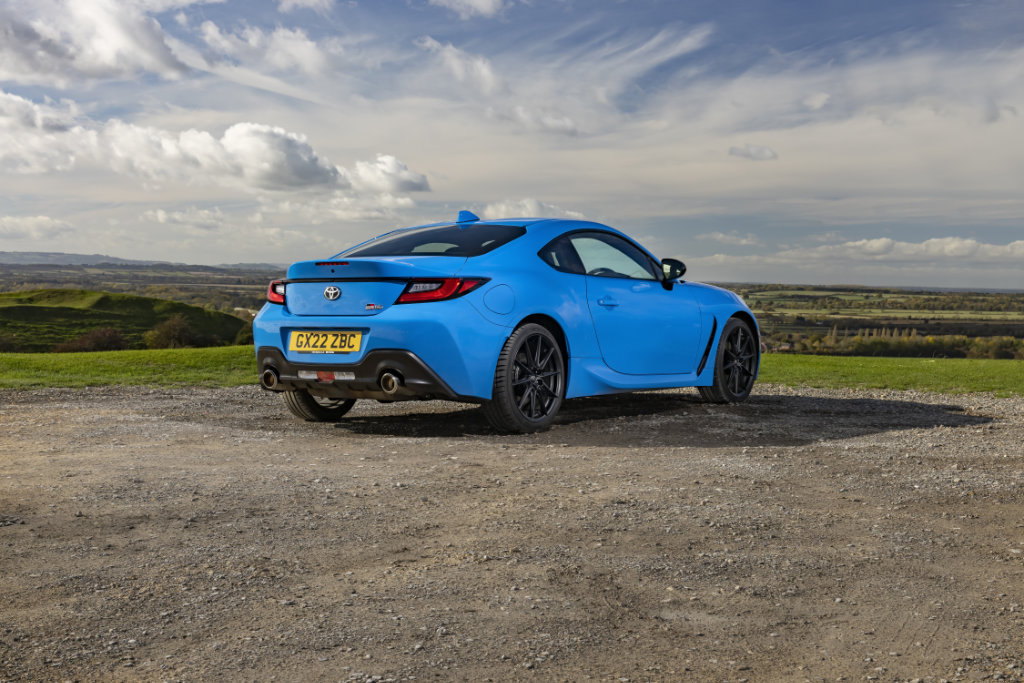
Bizarrely, then, what we had was a very fine sports car indeed, actually shackled by the quality of its own dynamic abilities: Amateurs wanted more grunt to extract traction-free entertainment at lower speeds, and the more talented wanted more grunt because… Well, they always do.
So, enter, a decade later, the GR86 -the third road-going iteration of Toyota’s Gazoo Racing sub-brand after the GR Supra and the obscenely entertaining GR Yaris- which seeks to rectify GT86 enthusiasts’ demands for, well, a little more enthusiasm from the engine room, for starters.
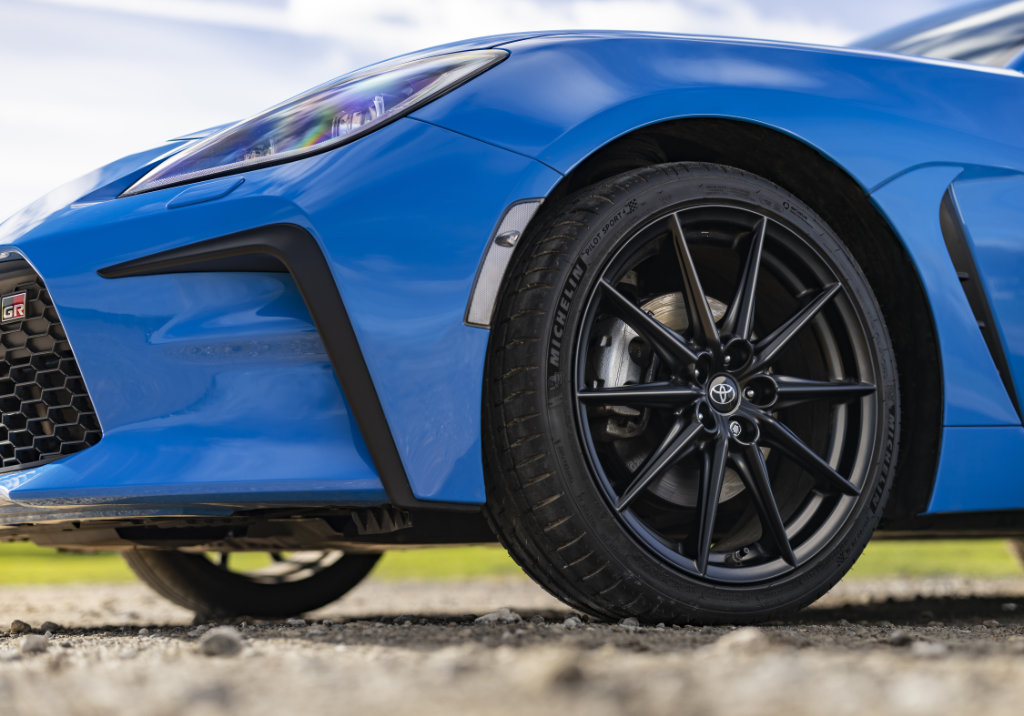
In fact, though the joint-venture, rear-wheel drive platform and boxer engine remain, more than two thirds of the GR86 is new compared with the GT86. The latter’s 2.0 litre lump has been bored out to 2.4 litres (with no weight gain), power is up 35bhp to 231bhp and torque climbs by 33lb ft to 184lb ft.
Throttle response is sharper, and peak torque now arrives at just 3700rpm, rather than the not especially appealing 6700rpm song and dance of yore. And this new, more muscular and flexible engine drops the 0-62mph dash to 6.3 seconds, and up the full George to 145mph.
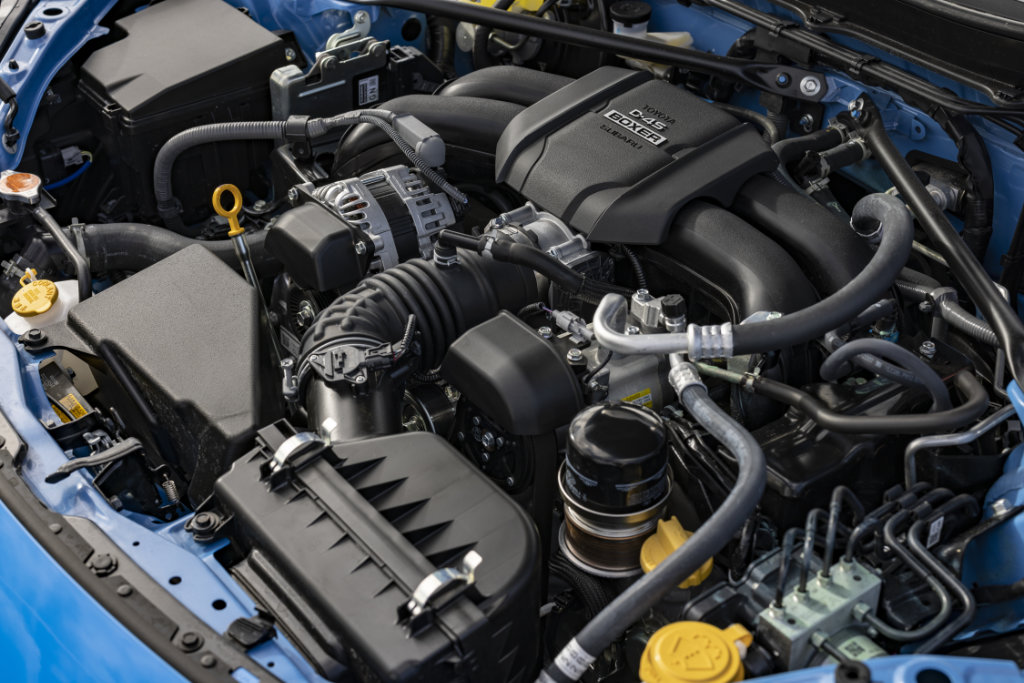
In addition, the six-speed manual shift has been tightened up with a shorter throw, and the bodyshell stiffened by a wholesome 60% at the front and 50% astern; the attendant promise of enhanced handling further abetted by proper Michelin Pilot Sport 4 tyres replacing that puny Prius rubber.
Some say the GR86’s gently fettled looks are an improvement over those of its predecessor, but both fall so far short of the glorious 2000GT that I find it hard to summon any real enthusiasm. Much like the chthonic interior, with an excellent driving position but little else going for it, it’s fine. Credit though, is due to engineering skills which have reduced weight increase to only 37kg.
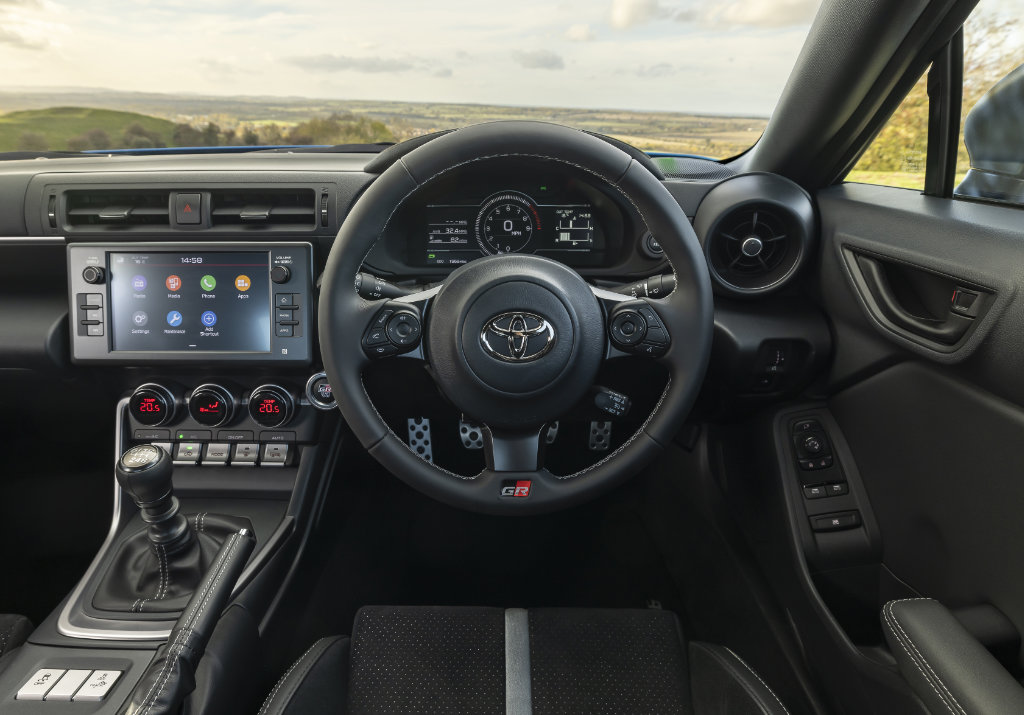
On the road, initial impressions are that the GR86 lacks some of the finesse of its predecessor. Even when warmed up I found the gear change more notchier and recalcitrant than its predecessor; altogether less pleasing. The engine noise is no crowd pleaser to boot, either at a trundle or full chat. Road noise is seriously intrusive at all times, and the ride is firm enough that dawdling is never a pleasure.
In other words, just shut up and get on with it. What hasn’t changed from the GT86 is just how hard you have to work to become entertained. This never feels like a quick car, and a combination of relentless rev and wrist action are required to both find speed and then maintain it through corners.
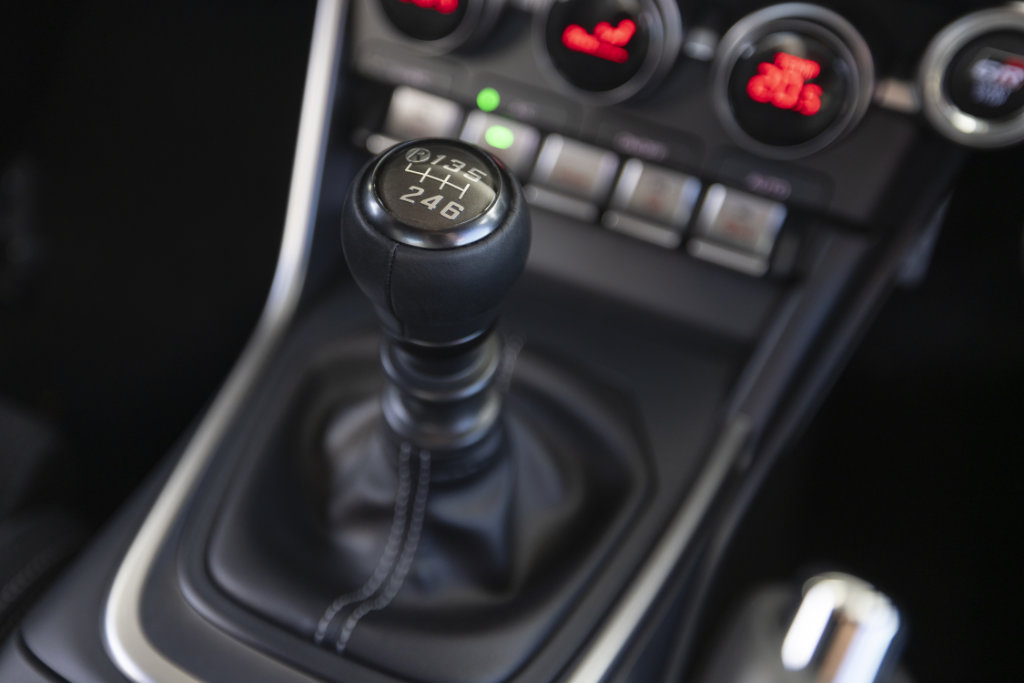
The steering is a light, accurate delight, it must be said, and, with very little body roll to speak of, the car’s willingness to change direction with little drama and wonderful balance is a joy to join in with. But…
In vile weather and in the absence of a track to play with I felt entirely shackled during my tenure. The car’s straight line speed is nothing to write home about, and with grip levels now so much better than those of the GT86, tail-out fun simply isn’t there for the asking through the occasional tempting twister. All of which left me spending too much time being irritated by those niggles that simply vanish as the fun factor rises.
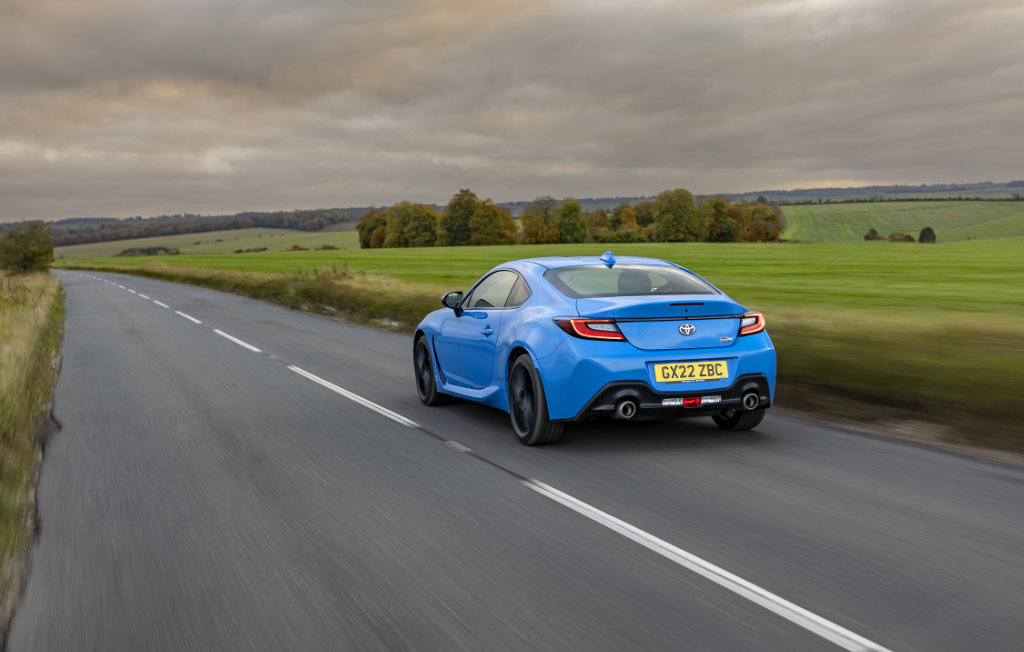
Never mind; the UK’s entire two-year allocation of cars was snapped up in 90 minutes once orders opened last year. And safety legislation requiring a fundamental front-end redesign will kill GT86 sales next year. Yet, somehow, that doesn’t disappoint me half as much as the thought of never owning a GR Yaris.